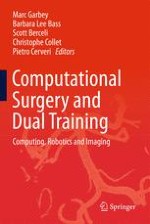2014 | OriginalPaper | Buchkapitel
24. Robotics as a Tool for Training and Assessment of Surgical Skill
verfasst von : Marcia K. O’Malley, Ozkan Celik, Joel C. Huegel, Michael D. Byrne, Jean Bismuth, Brian J. Dunkin, Alvin C. Goh, Brian J. Miles
Erschienen in: Computational Surgery and Dual Training
Verlag: Springer New York
Aktivieren Sie unsere intelligente Suche, um passende Fachinhalte oder Patente zu finden.
Wählen Sie Textabschnitte aus um mit Künstlicher Intelligenz passenden Patente zu finden. powered by
Markieren Sie Textabschnitte, um KI-gestützt weitere passende Inhalte zu finden. powered by
